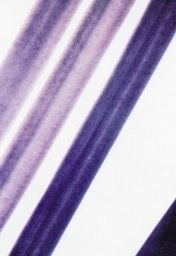© 2025 All rights reserved
Project by UsedTextilemachines.eu
Don't have an account yet? Register
Do you already have an account? Go to login Click here
Don't have an account yet? Register
Do you already have an account? Go to login Click here
Looking for the best opportunities to satisfy the customer:
Mobile Phone: +393319020189
Working hours: 09.30 / 12.30 - 16.00 / 18.00 From Monday to Friday.
The most commonly used artificial fibers are obtained by treating the natural cellulose of different plants.
if (the same that constitutes the vegetable fibers), suitably transformed and dissolved with solvents, e
subsequently spun in the form of textile fiber into yarn. Artificial fibers can be used
also in staple (discontinuous fiber) obtained by cutting. Other man-made fibers, actually
today little used, they have a protein origin (example Merinova, Lanital)
Cellulosic fiber spun as a continuous thread and cut-
ta in staple. Characteristics: sweet and waiting hand
silky, comfort typical of vegetable fibers,
good wear resistance (in the dry state),
good hygroscopic capacity. Uses: it is widespread in
numerous uses also in melee with
other natural or synthetic fibers, it is also used in moles
fields of clothing and furnishings.

Modified viscose staple, with better characteristics of use (for example: toughness, modulus ad
wet, alkali resistance). Characteristics: soft hand, bright look, elegance of the fabrics.
Excellent blending partner for cotton, wool and synthetics. Uses: shirts, blouses, dresses, clothing
sports and leisure chin, lingerie, tablecloths, towels.
Cupro.
Fiber obtained from treated cotton linters (very short fibers that remain on the cotton seed)
according to the cuprammonium process, produced as a continuous thread. Features: soft hand and
particularly silky, brilliant colors, good wear resistance, good breathability and hygro-
scopicity. Uses: linings, underwear, knitwear and furniture.
Acetate.
Continuous or staple cut yarn derived from cellulose. Features: soft and delicate hand,
silky appearance, bright and vivid colors, good breathability, low hygroscopicity, poor resistance
to wear. Uses: in women's clothing and for linings, also in blends with other fibers.
Lyocell.
Cellulosic fiber obtained by an organic solvent spinning process in full compliance with the
the environment. Characteristics: soft and luminous, it is close in appearance and touch to natural fibers such as
silk: it is breathable and resistant. Uses: pure or mixed with other fibers for women's clothing
le / men's, formal and casual, external and intimate knitwear.
Synthetic fibers are derived from synthetic organic substances (mostly from the distillate
petroleum) which are polymerized to obtain long molecular chains (macromolec-
le) that can be spun in the form of a continuous thread or staple (discontinuous fiber).
Acrylic.
Synthetic fiber with woolly characteristics. It has a good resistance to wear and elongation
chin. It is resistant to mold and microorganisms. Produced continuously, it is also used in
staple. It can also be used in blends with other fibers, in particular with wool. It is used
for external knitwear, underwear and hosiery.
Modacrylic.
It is a modified acrylic fiber to increase flame resistance. For this reason it comes
used for all those items where "fire prevention" requirements are required by law,
such as toys or plush.
After the sale of the machinery we also assist you in logistics and if desired by the customer we have technicians capable of reassembling and starting the machinery.
© 2025 All rights reserved
Project by UsedTextilemachines.eu
| Cookie | Durata | Descrizione |
|---|---|---|
| cookielawinfo-checkbox-analytics | 11 months | This cookie is set by GDPR Cookie Consent plugin. The cookie is used to store the user consent for the cookies in the category "Analytics". |
| cookielawinfo-checkbox-functional | 11 months | The cookie is set by GDPR cookie consent to record the user consent for the cookies in the category "Functional". |
| cookielawinfo-checkbox-necessary | 11 months | This cookie is set by GDPR Cookie Consent plugin. The cookies is used to store the user consent for the cookies in the category "Necessary". |
| cookielawinfo-checkbox-others | 11 months | This cookie is set by GDPR Cookie Consent plugin. The cookie is used to store the user consent for the cookies in the category "Other. |
| cookielawinfo-checkbox-performance | 11 months | This cookie is set by GDPR Cookie Consent plugin. The cookie is used to store the user consent for the cookies in the category "Performance". |
| viewed_cookie_policy | 11 months | The cookie is set by the GDPR Cookie Consent plugin and is used to store whether or not user has consented to the use of cookies. It does not store any personal data. |
Fill out the form to contact me